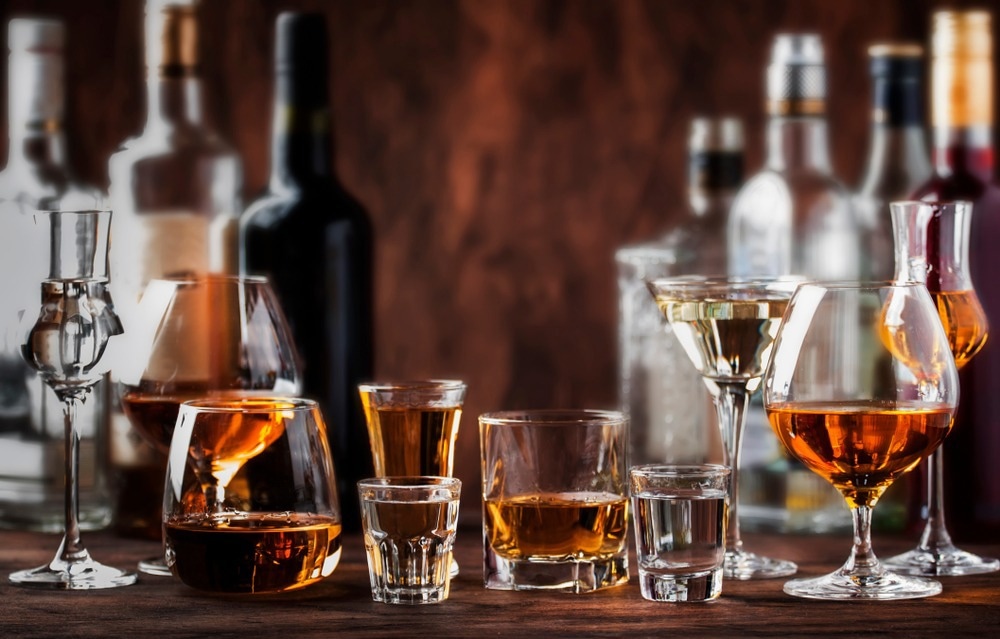In a recent study published in the Journal of Psychopharmacology, researchers examined the impact of real-world alcoholism on judgments of facial attractivity and symmetry across a single set of face stimuli.
 Study: Impaired face symmetry detection under alcohol, but no ‘beer goggles’ effect. Image Credit: 5PH/Shutterstock.com
Study: Impaired face symmetry detection under alcohol, but no ‘beer goggles’ effect. Image Credit: 5PH/Shutterstock.com
Background
The beer goggles phenomenon refers to sexual attraction to individuals intoxicated with alcohol based on alcohol-enhanced perceptions of physical beauty, particularly human faces. Alcohol may disrupt the ability to detect subtle bilateral asymmetries of the face, leading to more forgiving judgments of physical beauty and potentially harmful consequences, such as unwanted pregnancy, sexually transmitted infections, and marital breakdown.
About the study
In the present study, researchers evaluated the effects of alcohol on perceptions of facial attractiveness among bar patrons.
The researchers used two kinds of face liking and symmetry evaluation tests: one with single faces and one with face pairings. The researchers employed this expanded technique to evaluate facial symmetry and attractivity assessments between two commonly used facial processing tasks, offering a more accurate scale for single-face assessments than a purely binary options approach.
The study predictions were simple: pubgoers with lower BACs appreciate symmetrical face forms more robustly and identify asymmetry in facial contour more reliably than their peers with higher BACs. The design also included participant age, gender, and stimuli-facial gender assessments. The sample population comprised 99 individuals aged between 18 and 62 years with normal vision.
To investigate the impact of racial biases on face assessments, participants estimated the extent of their interactions with individuals from several ethnicities using a seven-point scale. The study used a 2.0(Face Gender) × 2(Participant Gender) × 2.0(Face Type) design with face gender and type as intra-individual variables and individual age and BACs as study covariates.
Four dependent factors were used: assessments of facial attractivity and symmetry on a 5.0-point scale, with one point indicating the least and five points indicating the maximum level of facial attractivity and symmetry, and two binaries for facial symmetry and attractivity. The team derived BACs using a breathalyzer, and stimuli from high-definition portrait photos of 18 adults aged between 20 and 25 years with various ethnic backgrounds. Participants were shown 18 unique faces and presented twice: once in their natural form and once in an enhanced asymmetrical form.
Results
The study involved heterosexual (87%), bisexual (9.0%), and pansexual (1%) individuals living in the United Kingdom. Most participants were of white race, and only five had lived in another nation for over six months. They reported the highest level of contact with white (European) individuals and moderate-level contact with individuals of mixed, black, Asian, or other ethnicities.
BAC values ranged from 0.0% to 0.4% (median, 0.1%). The analysis revealed a statistically significant effect of facial type, with the natural type rated more attractive than artificially created asymmetrical ones. In addition, there was a significant interaction between the type of face and participant gender, as indicated by female and male individuals providing higher ratings for natural faces than the asymmetrized ones.
Older participants provided lower ratings for natural faces ratings than asymmetrized ones. The percentage of symmetrical facial selections differed significantly for female and male faces, confirming a preference for symmetrical over natural face forms and indicating that the study participants were excellent at facial symmetry detection.
The analysis showed a statistically significant effect of the breath alcohol concentration on the average percentage of symmetrical face verdicts, with higher BACs related to a weakened capability to distinguish symmetrical faces from natural ones. Symmetry ratings for natural face forms were negative, though non-significantly associated with the mean breath alcohol concentration, whereas those for asymmetrical face versions showed positive but significant correlations with the mean BAC.
Alcohol did not influence attractiveness judgments, but higher BACs were associated with higher symmetry ratings. Additionally, heavily intoxicated individuals were less able to distinguish natural from perfectly symmetrized face versions than more sober drinkers. The researchers obtained similar findings excluding non-heterosexual participants.
Conclusions
Overall, the study findings showed that although alcohol reduced the detection of facial asymmetry, this perceptual distortion did not contribute to the beer goggles phenomena. Asymmetrical faces were rated as less appealing and symmetrical than their natural counterparts. Higher degrees of drunkenness were related to higher judgments of symmetry for asymmetrical faces and a weaker capacity to discriminate symmetrical face shapes from natural ones.
Contrary to earlier findings, alcohol did not affect single-face beauty ratings or the amount to which individuals chose symmetrical face shapes over natural ones when viewed side by side. Further research is required to understand the more rapid reactions of females after alcohol ingestion.